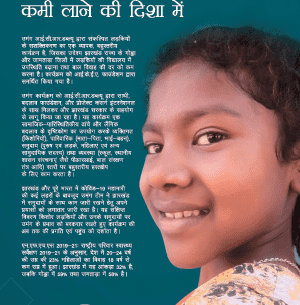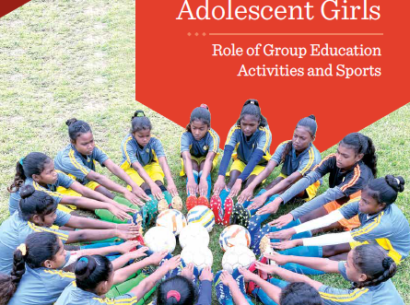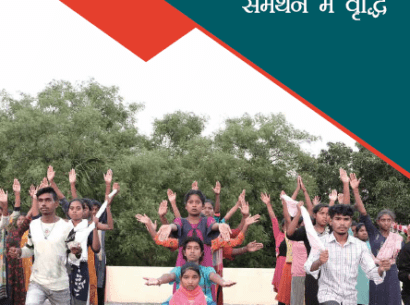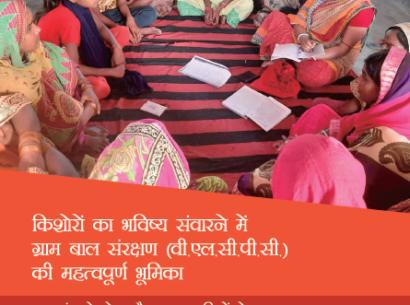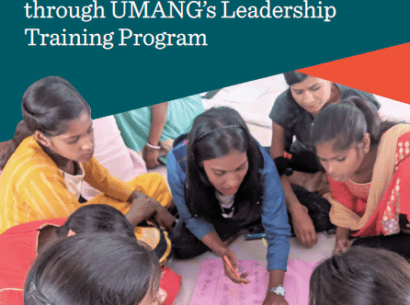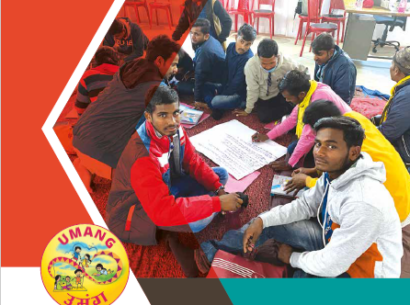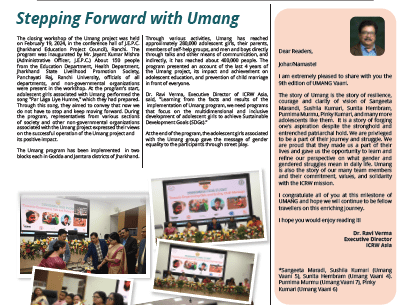
UMANG
2018 - 2024
The IKEA Foundation
India
Nasreen Jamal
The practice of early marriages of girls and child brides has been a historically prevalent one in India. Despite enforcing the legal prohibition on early marriages, complete eradication of this practice has not achieved in the country owing to deep rooted social norms and beliefs in communities. Adolescent girls are being forced to give up education and their freedom to become young brides to perpetuate patriarchal norms leading to multiple forms of exploitation and health problems.

ABOUT UMANG
In this context, ICRW Asia conceptualized the UMANG as a comprehensive, multi-layered girls’ empowerment program aimed increase their school retention and reduce child marriage in Godda and Jamtara districts of Jharkhand, India. Supported by IKEA Foundation, UMANG is being implemented by ICRW in partnership with SATHEE, Badlao Foundation and Project Concern International, and in close association with the Government of Jharkhand.
Adolescent girls and their rights are at the center of the program design. UMANG aims at addressing the lack of agency and restricted mobility that adolescent girls experience to enhance their aspirations and their ability to act and advocate for themselves in the short as well as long term. Despite the background of multiple waves of COVID-10 pandemic in Jharkhand and in India at large, team UMANG has continuously re-planned and re-calibrated efforts to continue work with the communities in Jharkhand.
WHAT DID WE SET OUT TO DO?
- Use a socio-ecological framework and gender-transformative approaches, UMANG aimed at creating multi-layered interventions at individual (adolescent girls), family (parents, siblings), community (men and boys, women, and other community members), and system (schools, local governance structures, child protection mechanisms, etc.) levels.
- Test the impact of street plays and social and behaviour change communication (SBCC) campaign towards positively influence social norms toward supporting long-term change in two districts of Godda and Jamtara in Jharkhand.
WHAT METHODS DID WE USE?
- School based activities: These activities included Group Education Activities (GEAs) with adolescent girls and boys, school-based campaigns and discussions at school assemblies, discussion on gender issues with teachers and headmaster, strengthening school management, committee and Bal Sansad, safety audits, and school profiling.
- Group Education and Sports: A total of 209 villages were selected in 4 blocks from both interventional districts and enlisted 10-14- and 15-18-years girls through home visits and consented/ assented with parents and girls to join community-based group education activities (GEA). Football sessions for girls were added to break stereotypes.
- Engaging Men and Boys: UMANG program includes a specific component to sensitize men and boys to shift inequitable social norms to improve gender relations, increase the value of girl child at family and community levels and create enabling and supporting environment for the girl’s empowerment.
- Communication: The SBCC strategy developed by UMANG is the process that guides the design of interventions establishing intended target groups, setting behavioural communication objectives, and determining consistent messages and activities across channels UMANG did several SBCC campaigns through mid and mass media including Interpersonal communication sessions with adolescents, school teachers, male members of community and the opinion leaders. Street-plays, digital wall wrap and mass media campaign through FM and AIR radio: Though street-plays and other mass media campaigns UMANG program has been raising awareness in villages on issues like child marriage and illiteracy as well as applauding parents who are empowering their daughters with information, education and above all, their support. The content of all such activities has been primarily developed by UMANG adolescents’ girls.
- System Strengthening: We have been working with government departments at state and district levels to activate/ strengthen institutional mechanisms/platforms and facilitate convergence and evidence-based planning.
KEY OUTCOMES
- Enhanced aspirations of girls to delay marriage, pursue higher education and seek employment.
- Enhanced agency of girls to negotiate the timing of marriage as well as choice of partner, pursue higher education and seek employment.
- Positive shifts in attitudes toward gender and marriage-related norms among girls, boys, parents and the community.
- Increased inter-departmental convergence on evidence-based planning for adolescents’ empowerment.
Through various initiatives and activities, UMANG will directly reach around 200,000 stakeholders (including adolescent girls, parents, SHG members, men and boys) and will indirectly reach around 400,000 stakeholders.


